
Viking Names
Dalby
Dalby, in the South Riding of Lindsey in Lincolnshire, comes from the Old Norse element dalr ‘a valley’ and Old Norse bý ‘a farmstead, village’. Thus the meaning of the place-name is ‘a farmstead, village of the small valley’, which is topographically appropriate.
Read More
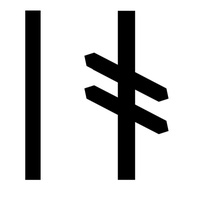
Viking Names
Bjor
Bjórr is an original byname meaning ‘beaver’. It is recorded in a Norwegian runic inscription as the name of a mane who took part in Cnut’s expedition to England and died there (c. 1015). Biur is recorded in Sweden as a byname.
Read More

Viking Names
Audhild
The Old Norse female personal name Auðhildr is a compound formed of the first element Auð-, which is obscure in origin but perhaps auðr ‘wealth’ or from the stem in auðinn ‘that befalls one’ and jóð ‘new-born baby’, combined with the second element -hildr ‘battle’. A woman by the name of Auðhildr was recorded recorded as having lived in the Orkneys in the early twelfth century. Auðhildr is believed to be the first element in the medieval field name of Odelgateland in Stainburn, West Yorkshire. It also appears in medieval Lincolnshire and Yorkshire documents. However, some forms of the name may represent the Continental Germanic female name Odil.
Read More
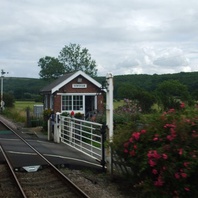
Viking Names
Howsham
Howsham, in the Yarborough Wapentake of Lincolnshire, is a simplex place-name from the dative plural of Old English hūs or Old Norse hús, both elements have the meaning ‘a house; also sometimes used of a building for special purposes’, so húsum ‘at the houses’. The weakly stressed -um was subsequently interpreted as -ham. This is a common formation in Denmark, so the place-name is likely Danish in origin.
Read More
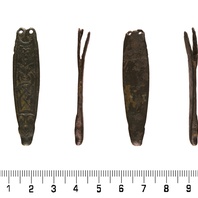
Viking Objects
Decorated Strap-End (WMID-2D6997)
A copper-alloy Thomas Class A Type 1 strap-end with a section at the top which splits into a ‘V’ shape. The strap-end is decorated with what seems to be a stylized face above some interlaced knotwork while the tip features a stylized beast head.
Read More

Viking Names
Stein
Originally a byname, Steinn ‘stone’ is a very common personal name across Scandinavia. It appears early and remains fairly common as a personal name in both Norway and Iceland. As a personal name, the later form Sten is fairly common in Sweden and Denmark. Several instances are recorded as a byname in Denmark, possibly as a loan from Sweden. The name may also be found in a place-name in Normandy. It is also the first element in Stenson, Derbyshire.
Read More
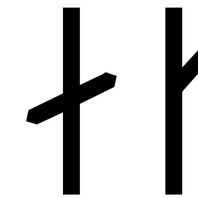
Viking Names
Klakk
Klakkr, an original byname from Old Norse klakkr, probably a ‘peg on saddle on which baggage is hung’, appears in a few recordings in West Scandinavia. The name is related to the byname Klakka, which appears early and often in West Scandinavia. Klak is also recorded in Sweden and found in some Danish place-names. Klakkr is the first element of Claxby, Lincolnshire.
Read More
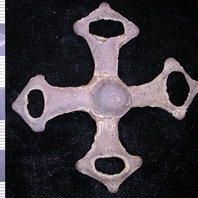
Viking Objects
Harness Strap-Divider (LEIC-0DF1A3)
This harness strap-divider is cross-shaped with a central domed boss. The loops would have held leather harness straps and were usually placed at the side of a horse’s head.
Read More
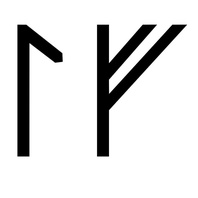
Viking Names
Ulf
Úlfr is a very common name throughout Scandinavia, meaning ‘wolf’. It is also frequent in England, occurring both independently and in place-names like Ulceby Lincolnshire and Ullesthorpe, Leicestershire. While Old English has a personal name element Wulf, common in compound names such as Wulfstan, it is very rarely used on its own as a monothematic name, unlike the Old Norse cognate. The Old Norse name can also be found as both the first and second element in compound names, such as Úlfgeirr or Þórulfr. The name is also found in a sundial inscription from Aldbrough, East Yorkshire, along with the female name Gunnvor.
Read More

Viking Names
Temple Normanton
Temple Normanton, in the Scarsdale Hundred of Derbyshire, takes its name from the Old English ethnonym Norðman ‘Northman, Norwegian’ and the Old English element tun ‘farm, settlement’. There are several places of this name, predominantly in the East Midlands: five in Nottinghamshire, also others in Derbyshire, Leicestershire, Lincolnshire and Rutland, and one in the West Riding of Yorkshire. Previously the prefix was North to distinguish it from South Normanton. The prefix Temple refers to previous ownership by the Templars. Traditionally, the place-name has been interpreted as referring to a settlement of Norwegians (in an area where most of the Scandinavian settlers were Danes). However, the exact implications of such a name are not yet fully understood and are the subject of ongoing work by Dr Jayne Carroll of the Institute for Name-Studies, University of Nottingham.
Read More
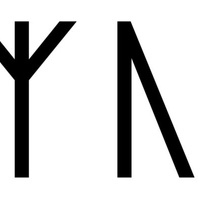
Viking Names
Vigmund
Vígmundr is an Old Norse compound name containing the elements Víg- ‘battle, strife’ and -mundr ‘protector’ or alternatively ‘gift’. It seems to be found in a place-name in Norway and a few instances are recorded in Swedish runic inscriptions. A name Wimund(us) occurs fairly frequently in Normandy and men of this name are recorded in Domesday Book as present in Lincolnshire. Vígmundr or its Old English equivalent, Wigmund, is the first element of the place-name Winthorpe, Nottinghamshire.
